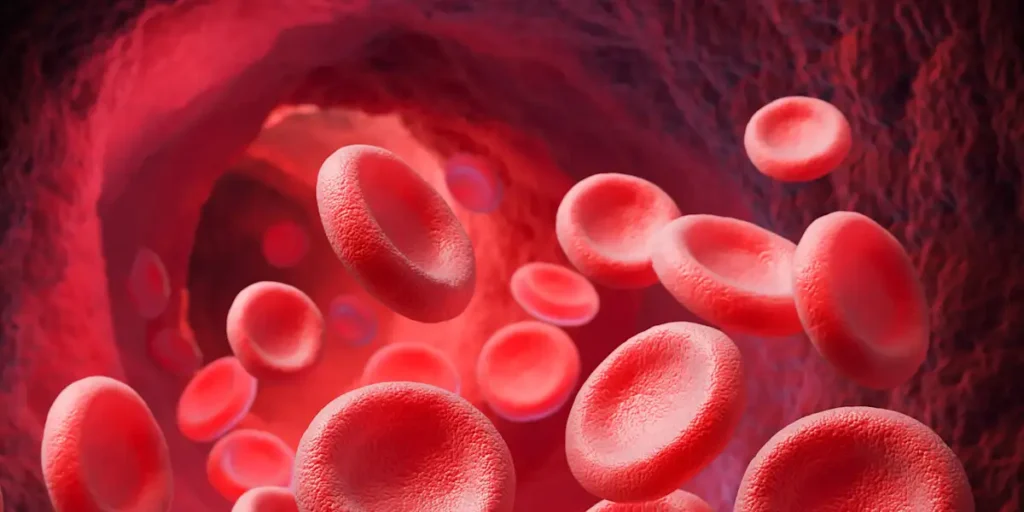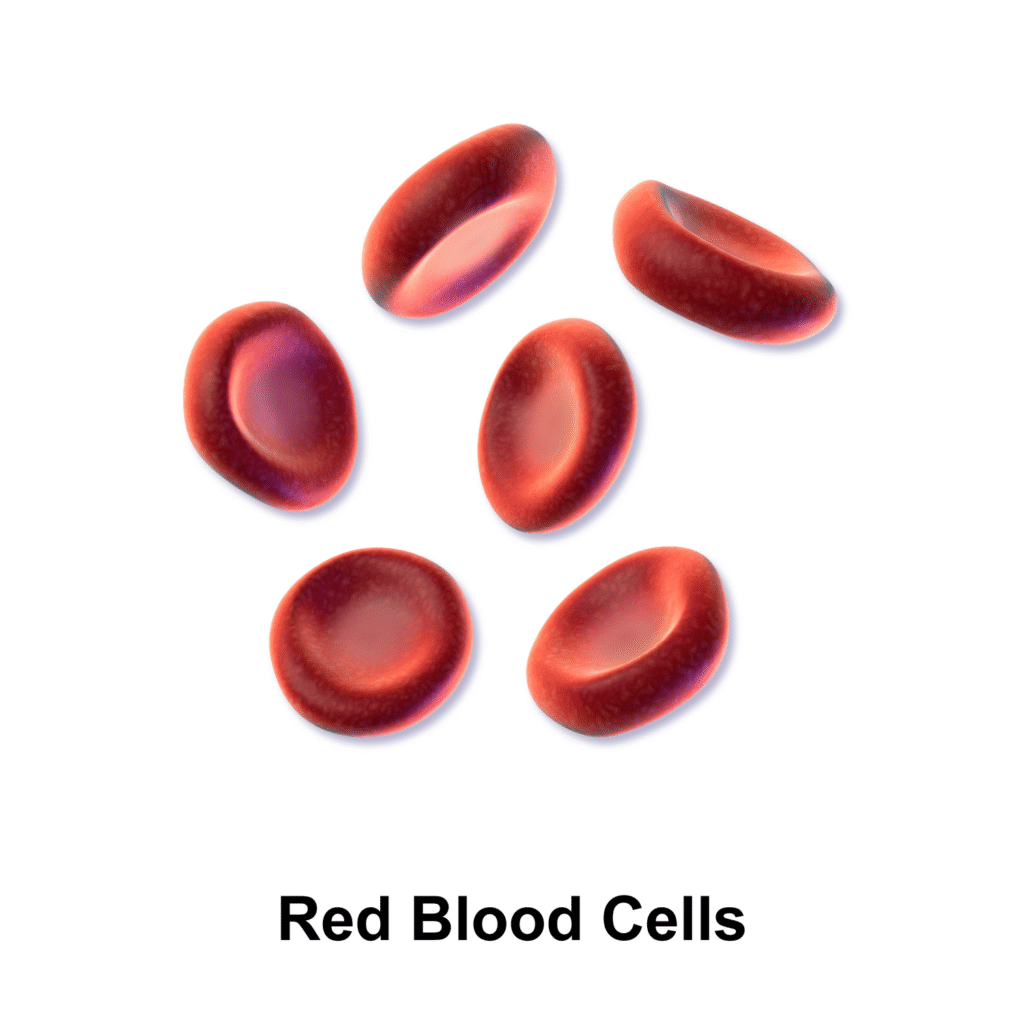Blood Cells: An Essential Guide for Pharmacy Students
Understanding blood cells is crucial for pharmacy professionals who need to make informed decisions about patient care and medication management. This comprehensive guide explores the fascinating world of blood cells, their functions, and their clinical significance in pharmaceutical practice. Blood makes up about 8% of your total body weight and serves as the body’s transportation highway, delivering oxygen, nutrients, and medications throughout your system[1]. The cellular components of blood include red blood cells (erythrocytes), white blood cells (leukocytes), and platelets (thrombocytes), each playing vital roles in maintaining your health[1][2].

How Blood Cells Are Made: The Amazing Process of Hematopoiesis
Where It All Begins
Your body produces an incredible 100 billion to 1 trillion new blood cells every single day through a process called hematopoiesis[3][4]. This continuous cell factory operates in your bone marrow, where special stem cells work around the clock to replace aging blood cells and maintain optimal levels in your bloodstream[3][5].
These remarkable stem cells have a unique superpower – they can make exact copies of themselves while simultaneously creating new blood cells[6][7]. Think of them as master craftsmen who never run out of materials and can produce any type of blood cell your body needs[3].
The Journey from Stem Cell to Specialized Blood Cell
The production process follows a carefully orchestrated pathway that begins before birth and continues throughout your entire life[3][6][7]. During fetal development, blood cell production starts in the yolk sac, moves to the liver and spleen, and finally establishes its permanent home in your bone marrow[3][6][7].
Your body uses sophisticated chemical signals called growth factors and cytokines to control exactly how many of each type of blood cell gets produced[6][8][9]. This precise regulation ensures you always have the right number of cells for optimal health and function.
Red Blood Cells: Your Body’s Oxygen Delivery Service

Design and Structure
Red blood cells are truly remarkable – you have about 25 trillion of them circulating in your body right now[1][10][11]. These cells have a distinctive doughnut-like shape called biconcave, which maximizes their surface area for efficient oxygen pickup and delivery[1][11].
What makes red blood cells unique is what they don’t have – no nucleus, no mitochondria, and no other cellular machinery[10][11][2]. This streamlined design allows each cell to pack in about 270 million hemoglobin molecules, the special protein that carries oxygen[10].
The Oxygen Transport System
Hemoglobin acts like a molecular taxi service, picking up oxygen in your lungs and dropping it off wherever your tissues need it most[12][10][13]. This iron-containing protein also helps transport carbon dioxide waste back to your lungs for elimination[1][10][13]. The iron component gives your blood its characteristic red color and is absolutely essential for oxygen-binding ability[12][13].
Lifespan and Replacement
Each red blood cell works tirelessly for about 120 days, making roughly 172,000 trips through your circulatory system and traveling approximately 300 miles[11]. When these cellular workhorses finally wear out, specialized cleanup cells in your spleen, liver, and bone marrow remove them from circulation[11][2].
Your body maintains this massive cell population through continuous production, taking about seven days to create each new red blood cell from start to finish[1][8]. A hormone called erythropoietin (EPO), produced mainly by your kidneys, acts as the production manager, increasing output when oxygen levels drop[8][4].
White Blood Cells: Your Personal Security Team
The Immune System’s Diverse Workforce
White blood cells function as your body’s sophisticated security system, with different types of cells specialized for different threats[3][14][2]. Unlike red blood cells, these defenders are colorless and much less numerous, with normal counts ranging from 4,000-11,000 cells per microliter[2][4].
These immune warriors are organized into two main categories: granulocytes (cells with visible granules) and agranulocytes (cells without visible granules)[14][2]. Each type has specialized tools and tactics for fighting infections and maintaining your health.
The Granulocyte Squadron
Neutrophils serve as your first responders, making up 50-70% of your white blood cell force[14][2][4]. These cellular soldiers quickly rush to infection sites, where they engulf and destroy bacteria and fungi through a process called phagocytosis[2][15]. Though they only live 6-8 hours in your bloodstream, they work incredibly hard during their short lives[2].
Eosinophils represent 1-4% of your white blood cells and specialize in fighting parasitic infections and managing allergic reactions[14][2]. Their distinctive red granules contain powerful weapons specifically designed to combat parasites that are too large for other cells to handle[2].
Basophils are the rarest white blood cells, comprising less than 1% of your immune force[14][2]. Despite their small numbers, these cells play crucial roles in allergic reactions by releasing histamine and other inflammatory signals[3][2].
The Agranulocyte Elite Forces
Lymphocytes make up 20-40% of your white blood cells and represent the elite special forces of your immune system[3][14][2]. These cells include B cells that produce antibodies, T cells that coordinate immune responses and directly kill infected cells, and natural killer (NK) cells that patrol for abnormal cells[3][6][2]. Some lymphocytes can live for years, providing your body with immunological memory[2].
Monocytes comprise 2-8% of white blood cells and serve as the cleanup crew supervisors[14][2]. These large cells patrol your bloodstream and, when needed, enter tissues where they transform into powerful macrophages[2]. These tissue macrophages perform essential maintenance tasks including cleaning up cellular debris, presenting antigens to other immune cells, and promoting tissue repair[2].
Platelets: Your Emergency Repair Team
Structure and Origin
Platelets are unique blood components that aren’t actually complete cells but rather cell fragments[16][2]. These tiny repair specialists measure only 2-4 micrometers across and originate from giant cells called megakaryocytes in your bone marrow[4]. You typically have 150,000-450,000 platelets per microliter of blood, and each one remains functional for 8-10 days[16][4].
Blood Clotting Specialists
When you get injured and start bleeding, platelets spring into action as your body’s emergency repair team[3][16][4]. They quickly stick to damaged blood vessel walls and clump together to form a temporary plug[16]. Simultaneously, they release chemical signals that trigger a complex cascade of reactions, ultimately forming a strong, stable clot that stops the bleeding[16].
Common Blood Cell Problems and What They Mean
Red Blood Cell Disorders
Anemia occurs when you don’t have enough healthy red blood cells or hemoglobin to carry adequate oxygen to your tissues[11][2]. This can happen due to iron deficiency, vitamin deficiencies, chronic diseases, or genetic conditions[11]. Symptoms often include fatigue, weakness, and shortness of breath.
Polycythemia represents the opposite problem – too many red blood cells, which can make your blood thick and increase your risk of blood clots[11].
White Blood Cell Problems
Leukocytosis means having too many white blood cells, often indicating your body is fighting an infection or dealing with inflammation[2]. Leukopenia means having too few white blood cells, which can leave you vulnerable to infections[2].
More serious conditions like leukemia involve abnormal white blood cells that multiply uncontrollably and don’t function properly[2].
Platelet Disorders
Thrombocytopenia (low platelet count) increases your bleeding risk and can result from various causes including medications, autoimmune conditions, or bone marrow problems[16]. Thrombocytosis (high platelet count) can increase your risk of blood clots[16].
Laboratory Testing: Understanding Your Blood Work
The Complete Blood Count (CBC)
The CBC is the most common blood test and provides a comprehensive snapshot of your blood cell populations[9]. This test measures the numbers and characteristics of all your blood cell types, helping healthcare providers detect problems, monitor treatments, and assess your overall health[9][2].
For pharmacy professionals, understanding CBC results is essential for monitoring medication effects, detecting drug-related side effects, and ensuring patient safety[9].
Clinical Applications for Pharmacy Practice
Knowledge of blood cell biology helps pharmacists recognize when medications might affect blood cell production, understand why certain monitoring is necessary, and provide better patient counseling[9]. Many drugs can impact blood cells, making regular monitoring crucial for safe and effective therapy[9].
Key Takeaways for Future Pharmacists
Blood cells represent one of the most dynamic and essential systems in human physiology. The continuous process of blood cell production ensures adequate oxygen delivery, immune protection, and bleeding control. For pharmacy students, mastering blood cell fundamentals provides the foundation for understanding drug mechanisms, recognizing adverse effects, and optimizing patient care.
This knowledge becomes particularly valuable when counseling patients about medications that affect blood cells, interpreting laboratory results, and collaborating with other healthcare providers to ensure the best possible outcomes. The remarkable efficiency and complexity of your blood cell system demonstrate the incredible sophistication of human biology and underscore why comprehensive understanding is so important in healthcare practice[1][3][5][2][4][9]. Understanding these cellular heroes working tirelessly in your bloodstream helps pharmacy professionals provide better care and make more informed clinical decisions that ultimately benefit patient health and wellbeing.